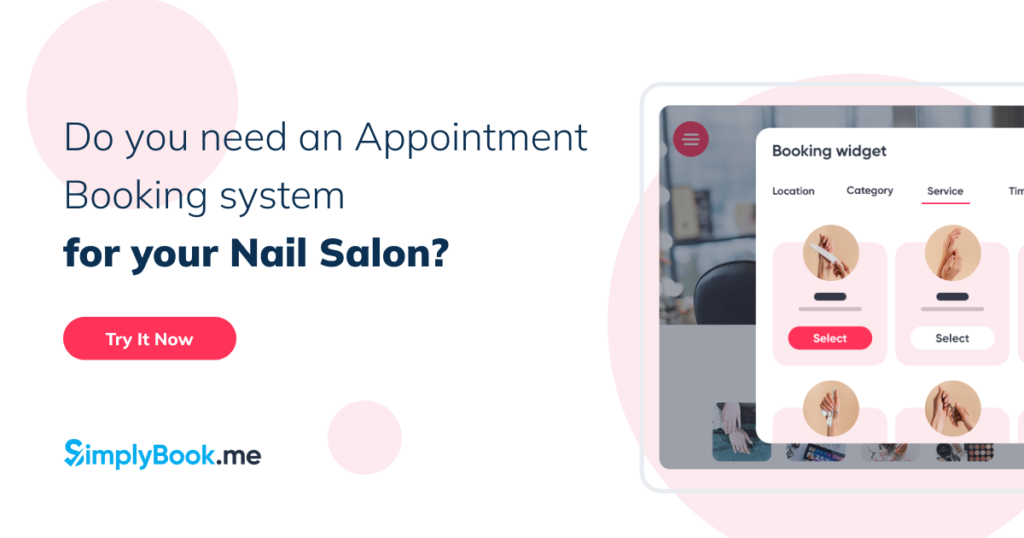How to Open a Nail Salon: Launching Your Nail Business

This post is also available in:
![]()
![]()
![]()
![]()
Interested in embarking on the journey to establish your own nail salon? This comprehensive guide outlines the crucial steps to launch your dream business. From creating a distinct salon vision to navigating the complexities of business plans, legal requirements, and marketing strategies, we provide the insights you need to set up and operate a successful nail salon. Discover how to create an inviting atmosphere, manage finances, hire skilled technicians, and much more. Start shaping your future in the beauty industry by opening your nail salon today.
Key Takeaways
- Develop a strong value proposition and create an inviting ambiance by focusing on unique aspects like local craftsmanship and personalized services to set your nail salon apart.
- Compile a comprehensive business plan covering market analysis, financial strategy, and marketing approaches to lay a solid foundation for your nail business and attract potential investors.
- Ensure legal compliance by choosing the right business structure, securing proper licensing, and maintaining a healthy and safe salon environment to uphold professional standard
Crafting Your Nail Salon Vision

A value proposition is your salon’s unique selling point, distinguishing your nail salon from the many others that dot the market landscape. It should be much more than just a tagline. Ideally, it should encapsulate the essence of your nail salon. A compelling value proposition should emphasize aspects such as unique gifting options, affordability, and local community support. For instance, ‘Experience bespoke beauty while supporting local artisans’ could resonate well with customers who appreciate local craftsmanship and personalized services.
Fostering a warm and inviting ambiance is similarly important. It begins with selecting furniture that aligns with your chosen theme and could even extend to partnering with local artists to create a culturally dynamic environment. Imagine your clients soaking in local art while their nails are being pampered – that’s an experience that stands out!.
Building a Robust Business Plan for Your Nail Salon
A robust business plan is the backbone of a successful nail salon. It serves as your strategic blueprint, outlining your vision, goals, and strategies to achieve them. This comprehensive plan should include:
- Key information about the salon
- Market research and analysis
- Operations plan
- Marketing strategy
- Financial plan
A well-crafted business plan showcases your understanding of the nail salon industry, market trends, competitive landscape, and financial projections, inspiring confidence in potential investors.
Market Analysis and Target Audience Identification
Grasping the nuances of your target market is a key element for the triumph of your nail salon. It involves analyzing potential customers’ demographics, such as their:
- location
- age
- income
- lifestyle
This analysis helps tailor your nail salon services to suit the preferences of your target audience. Additionally, psychographic segmentation allows you to create customer personas that reflect expected behaviors or preferences, enabling targeted marketing strategies.
Collecting information about your target market involves research of local demographics, client interviews, and observing social media trends. This knowledge helps customize your nail salon’s offerings. Competitor research is also essential to identify service gaps and opportunities where your salon can uniquely meet customer needs. All this information assists in making informed decisions about marketing, pricing, and modifying services to align with customer expectations and enhance customer satisfaction.
Developing a Financial Strategy
Initiating a nail salon necessitates a sturdy financial blueprint. Estimating startup costs should account for expenses involved in leasing or renting a location, purchasing equipment, acquiring inventory, securing licenses and permits, initiating marketing efforts, and ensuring adequate working capital. A pricing strategy, formulated based on local demographics, competitor pricing, and costs of operation, ensures your nail salon remains profitable without confusing customers.
Forecasting your salon’s revenue involves projecting both monthly and annual income by considering factors such as the number of expected customers, service prices, the likelihood of repeat patronage, and potential variations in demand due to seasonal changes. A detailed financial model should cover projections for startup costs, operating expenses, and income for the first three to five years. It should also explore payment plans for furniture and credit opportunities, while accounting for ongoing costs, taxes, and insurance.
Marketing and Branding Tactics
Impactful branding and marketing are instrumental in distinguishing your nail salon from its rivals. Consistent branding, including a well-designed logo, helps establish a recognizable identity for your nail salon. Highlight what makes your salon unique. Is it affordability, elegance, or exceptional staff? This unique selling point should be the cornerstone of your marketing efforts.
Tailoring marketing efforts to your identified target audience can enhance the effectiveness of promotional activities. Here are some tactics to consider:
- Collecting email addresses for direct marketing
- Soliciting online reviews
- Guest posting on local blogs
- Leveraging social media to showcase nail art, engage with customers through real-time videos, and run contests to increase interaction and salon visibility
These strategies can help drive traffic and build a loyal customer base.
Remember, consistency in marketing efforts and continually coming up with new ideas are essential to keep the nail salon business vibrant and profitable.
Legalities and Paperwork: Setting Up Your Nail Business
Adhering to legal stipulations is of paramount importance in establishing your nail salon. From choosing the right business structure to obtaining necessary licenses and permits, each step ensures your salon operates legally and professionally.
Selecting the Right Business Structure
Your nail salon can be structured as:
- A sole proprietorship: requires less paperwork but does not separate your personal and corporate assets, leaving you personally liable for business debts.
- A corporation: protects you from personal liability, separating business profits and losses from personal assets.
- A limited liability company (LLC): provides personal liability protection and offers flexibility in management and taxation.
Each structure has its advantages and trade-offs.
Limited liability companies (LLCs) combine the tax advantages of a sole proprietorship with the liability protection of a corporation. They are a popular choice among salon owners due to these advantages. Registration is typically not required for sole proprietorships, but LLCs and corporations must register with the state. It’s advisable to consult with a local business attorney or a tax professional to choose the best structure for your nail salon business.
Securing a Business License and Permits
Obtaining a business license and necessary permits is a critical step in setting up your nail salon. These documents ensure your business operates within state and local regulations. Each state has its own requirements for a nail salon license. For instance, in California, applicants must be at least 17 years old, complete 400 hours in an approved program, and pass state exams. In Florida, applicants need to be at least 16, hold a high school diploma, complete 240 hours of instruction from an approved school, and complete an HIV/AIDS course.
Apart from professional licenses, such as a nail technician license, you may need to obtain additional local licenses or seller’s permits if your salon plans to sell products like nail polish. The cost of these licenses can vary based on city or state regulations.
Securing the necessary permits, licenses, and business insurance for your salon’s location ensures compliance with state regulations and protects against liabilities.
Finding the Ideal Location for Your Nail Salon

The choice of location significantly influences the prosperity of your nail salon. Here are some factors to consider:
- High visibility and foot traffic near your salon can significantly attract walk-in customers.
- A location that is easily accessible by various modes of transportation is important.
- Adequate parking is vital for client satisfaction and safety.
Strategically placing your salon can lead to increased client visits and synergy. Consider the following factors when choosing your salon’s location:
- Proximity to complementary businesses like hair salons
- Location in residential areas or college localities
- Market research to understand the demand for services
- Knowledge of the competition
Thoroughly considering these factors can help inform the decision on your salon’s location.
Equipping Your Salon with the Right Tools and Supplies

Outfitting your salon with appropriate tools and supplies is key to delivering first-rate nail services. Essential salon furniture includes:
- A reception desk
- Comfortable seating for the reception area
- Manicure tables
- Pedicure chairs
- A nail polish display rack
- Overhead lighting
These pieces not only ensure your clients’ comfort but also create a professional and inviting environment.
Nail techs, also known as nail technicians, need a variety of tools including:
- Nail files
- Clippers
- Gel and acrylic supplies
- Dipping powders
- Extensions
- Manicure bowls
- Art supplies
- Cuticle care essentials
- Sanitization materials
- Nail polishes
Additionally, consider investing in salon management software to track critical business metrics such as revenue, costs, inventory, and appointments.
Remember, adequate ventilation is imperative in a nail salon to prevent overexposure to toxic chemicals and ensure a safe environment for both technicians and clients.
Hiring and Training Skilled Nail Technicians

As the old saying goes, a company is only as good as its employees. The same rings true for your nail salon. Recruiting proficient nail technicians is essential in offering superior services to your clients. It starts with creating a detailed job description outlining the skills and experience required, including:
- Proficiency in nail care
- Proper treatments
- Safety protocols
- Exceptional customer service abilities
Once you’ve attracted potential candidates, conduct thorough interviews, perform reference checks, and consider background checks to ensure their qualifications and suitability. After employing a rigorous screening and interview process, hire employees by making job offers to chosen candidates with a clearly outlined job title, salary, duties, and benefits. To ensure your technicians provide the best service, invest in comprehensive training courses that cover customer service skills along with the knowledge necessary for state licensing exams.
Managing Your Nail Salon Finances
Maintaining financial stability is central to the sustained success of your nail salon. To effectively manage your salon’s finances, set up a distinct business bank account specifically for the salon’s finances to keep them separate from personal assets and other business operations. Regularly monitor your salon’s cash flow by recording all expenses and sources of income.
Keeping a keen eye on operational costs such as supplies, business insurance, and rent can help manage finances effectively. Prepare for tax filings by compiling all financial documents, including gross receipts, COGS data, and a comprehensive list of expenses. Use financial planning tools such as Excel or automated software designed for business budgeting and financial tracking to stay on top of your salon’s financial health.
Implementing Effective Marketing Strategies
Executing potent marketing tactics is pivotal in enhancing brand visibility and drawing in new clientele. Social media platforms, particularly Instagram, can be a powerful tool to showcase your nail art, attract new customers, and engage followers. Tailoring marketing efforts to your identified target audience can enhance the effectiveness of promotional activities.
Host events such as grand openings, client appreciation nights, and open houses to increase salon visibility and contribute to a community atmosphere. Encouraging clients to leave reviews and collect their email addresses for future marketing campaigns helps maintain a relationship with the salon’s client base and encourage repeat business. Lastly, be listed on online marketing directories like Google My Business, Yelp, and Facebook to improve local search ranking and discoverability.
Ensuring Compliance and Safety in Your Salon

Operating a nail salon requires compliance with federal and state norms to guarantee a secure and law-abiding environment for both customers and nail salons. Nail salon owners must comply with federal and state OSHA-approved plans, protect workers from recognized workplace hazards, and follow specific health and safety regulations.
Maintaining a clean salon environment is crucial to meet client expectations for a hygienic environment. Your salon should adhere to specific sanitation measures to prevent the spread of infections, involving meticulous cleaning, use of EPA-registered disinfectants, and following proper procedures to sanitize tools and salon spaces. Additionally, proper ventilation is crucial to mitigate inhalation of harmful substances, as regulated under OSHA standard 1910.94.
Providing Outstanding Customer Experiences
Exceptional customer experiences form the cornerstone of any prosperous business. In your own nail salon, create a warm, inviting reception area that immediately comforts your clients. Ensure that customers are greeted warmly with eye contact and a smile to enhance satisfaction from the outset.
Personalize the service in your own nail salon business by conducting in-depth client consultations for new customers to address their nail care needs. Maintain detailed notes on each client’s nail condition and preferences, updating them with every visit. Special promotions, discounts, and a loyalty program can make clients feel valued and encourage recurring visits. Lastly, invite clients to leave online reviews to build your salon’s reputation.
The Digital Footprint: Establishing Your Online Presence
In today’s digital world, creating a strong online presence is a necessity. Start by creating a professional website for your nail salon, ensuring that the design has user-friendly navigation and is mobile-responsive. Implement online and mobile booking options using appointment scheduling software to manage bookings effectively and align with client preferences.
Leverage social media platforms, specifically Instagram, to showcase your nail work, engage with your local audience, and incorporate booking links to your salon’s online scheduling software.
Enhance customer relations through the use of mobile apps to track client history and preferences for a personalized experience.
Navigating Growth and Expansion
As your nail salon reaps success, expansion and growth may become viable options. Before embarking on this journey, analyze customer frequency, financial health, and your capacity to maintain service quality.
If you’re looking to open a nail salon, consider finding a location with good visibility, high traffic conditions, and proximity to target customers for your new branch.
Summary
From crafting a unique vision to navigating growth and expansion, we have covered all the essential steps to open a successful nail salon. Remember, owning a nail salon is not just about providing exceptional nail services; it’s about creating an unforgettable customer experience, building a strong brand, and establishing a solid business model. As you embark on this exciting journey, remember that success doesn’t happen overnight. It requires passion, patience, and persistence. So, go ahead and launch your dream!

Frequently Asked Questions
How profitable is owning a nail salon?
Owning a nail salon can be profitable, with net profit margins often ranging between 15% to 20% after expenses. Profitability depends on factors such as location, service diversity, operational efficiency, and customer retention. Successful salons in prime locations offering a wide range of services and excellent customer experiences can significantly increase their earnings. Additional revenue through product sales and loyalty programs also boosts profitability. With effective management, a nail salon can become profitable within a few years, potentially earning $200,000 annually or more.
What equipment is required to open a nail salon?
You will need equipment such as manicure tables, pedicure chairs, UV lamps, nail drills, and sterilization tools to open a nail salon. Good luck with your new venture!
How do I differentiate my nail salon from others?
To differentiate your nail salon, create a unique value proposition based on affordability, unique nail art, or exceptional staff. Additionally, focus on creating a welcoming atmosphere that aligns with your salon’s theme. Good luck!
What should I include in my business plan?
You should include an executive summary, market research, operations plan, marketing strategy, and financial plan in your business plan. Keep it updated to stay in tune with market changes and customer needs. Start working on it today!
How do I become a successful nail salon business?
To become a successful nail salon business, follow these essential steps:
- Create a Strong Business Plan: Outline your vision, target market, services offered, financial projections, and marketing strategies. A comprehensive business plan serves as a roadmap to success.
- Identify Your Unique Value Proposition: Differentiate your salon by focusing on unique services, exceptional customer experiences, or incorporating innovative nail art techniques.
- Ensure Legal Compliance: Obtain all necessary licenses and permits to operate legally. This includes a business license, a health and safety certificate, and professional licenses for nail technicians.
- Choose the Right Location: Select a location with high visibility and traffic, convenient access, and the potential for a strong customer base.
- Invest in Quality Equipment and Supplies: Equip your salon with high-quality nail products, comfortable furniture, and ensure a clean, inviting atmosphere.
- Hire Skilled Technicians: Recruit experienced and customer-focused nail technicians who can deliver quality services and represent your brand well.
- Implement Effective Marketing Strategies: Utilize social media, local advertising, and word-of-mouth to promote your salon. Offer promotions and loyalty programs to attract and retain customers.
- Provide Exceptional Customer Service: Ensure every customer feels valued and satisfied with their service. Personalized experiences and high-quality services encourage repeat business.
- Stay Up-to-Date with Trends: Keep abreast of the latest trends in nail art and technology to offer innovative services that appeal to a wide range of clients.
- Monitor Financial Health: Keep track of your finances, set realistic budgets, and adjust your business model as necessary to ensure profitability and growth.
Should I start a nail business?
Starting a nail business can be a rewarding venture if you have a passion for beauty and customer service, and if you’re willing to put in the effort to build and grow your business. Consider the following before starting:
- Market Demand: Research the demand for nail services in your target area. Is there a gap in the market your business can fill?
- Financial Investment: Consider the initial investment for setting up the salon, including location, equipment, and staff. Ensure you have the financial resources or access to funding.
- Business Acumen: Running a nail salon requires not just skill in nail art but also knowledge in business management, marketing, and customer service.
- Competition: Analyze the competition in your desired location. Can you offer something unique to stand out?
- Commitment: Be prepared for the commitment required to start and grow a business. This includes long hours and the potential for initial financial instability.
If you’ve evaluated these factors and are excited about the opportunity, starting a nail business could be a fulfilling career path. With dedication, strategic planning, and a focus on quality and customer satisfaction, you can build a successful nail salon business.



Comments
0 commentsNo comments yet